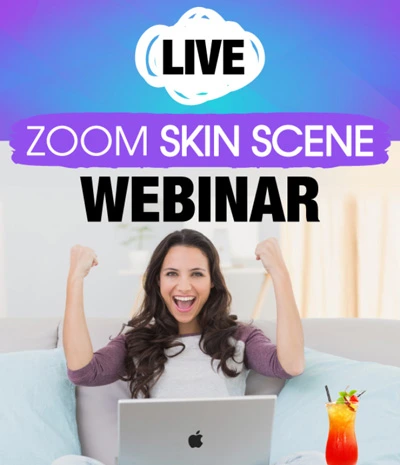Spa Business 101: Revisiting the Basics

When I think of the unprecedented growth of the med spa business just in the last decade, it’s almost impossible to believe. It’s also difficult to comprehend how many things in the industry have evolved in a relatively short amount of time. Technological advances have been astounding—from radical improvements in laser and light-based equipment, to better and expanded ways of injecting dermal fillers, and of course, the explosion of social media. It’s certainly a different yet exciting playing field than it was in the early 2000s.
But in our quest to chase the “new and improved,” we sometimes lose track of the fundamentals required for strong, long-term business performance. It’s important to revisit proven techniques for running any type of business and for the purpose of this article, a successful spa business. Let’s look at how we can effectively apply these basics in today’s ever-changing business climate.
Which Generation is More Important? X, Y or Revenue?
You guessed it—it’s revenue. Because no matter how many times a day you’re Tweeting about your business, or posting specials on Facebook, or how many Groupons you’ve sold, if clients aren’t walking in your door repeatedly to spend money on your services, nothing else matters. Client relationships are crucial. Marketing is essential. Providing in-demand services is key. But all of these things rest on the fact that you are in fact generating revenue. It’s sort of a Catch-22: you need to market your services to make money but if, after time, you’re not making money, you need to go back to the marketing drawing board.
There are many ways to improve revenue generation, both traditional and what’s called guerilla. Standard media channels typically work but can be prohibitively expensive: television, radio, print and online advertising. The good news is that there are now more affordable versions of all of them. Television ads, while always expensive, are not limited to just a few large network conglomerates. There are many local, startup cable and Internet channels with significantly lower advertising costs.
Print advertising has also become easier, more affordable and even DIY, thanks to online printing services like Vistaprint, Shutterfly and moo.com. From business cards to letterheads, many web shops will not only help you design a logo (or let you use your own), they will also execute the mailing for a reasonable fee. Digital media is often less expensive than print and worth looking into as part of your total marketing budget.
Aside from these traditional types of marketing, there’s also the opportunity for “guerilla marketing” to obtain clients using time and effort more so than dollars. For example, you can work to establish yourself as an expert in your field to obtain interviews on local TV/radio stations and printed publications. This way, you’re getting expensive media coverage but not paying for it. Just a five-minute interview about the services you offer with a local daily talk show host can gain you miles of exposure. The same is true for smaller, local radio stations. Don’t be afraid to call up and ask if there’s a spot for you. You might be surprised by the enthusiastic response you receive! Other examples of guerilla marketing include loyalty programs, industry discounts, networking with other health and beauty professionals and finding ways to make your business mobile—for example, could you offer microdermabrasion at your local gym or doctor’s office?
Two of the most important things to consider when determining the effectiveness of any marketing initiative are:
- Do I have the proper tracking in place?
- Have I given this enough time to work?
According to Ian Bowman, Spa Marketing Manager at National Laser Institute, “Most people need to hear something a minimum of three times before taking action.” He says you should be persistent but also realistic. “For example, you can’t launch a radio campaign and give up after a week because you didn’t get 1,000 calls. Depending on the platform used, four weeks is usually the minimum amount of time you want to give a campaign a trial-run.”
He also advises using all of the tools in your arsenal to track results including things like a unique phone number assigned to a particular ad, or a unique landing page to track click-throughs. And don’t forget about communication, both with your front desk and your clients. Ensuring your staff consistently asks, “How did you hear about us?” will reveal valuable patterns to you about your customer.
Control Your Costs—or They’ll Control You
Keeping an upper hand on what you spend goes hand in hand with tracking to ensure you’re spending on the things that provide the biggest return. It’s easy to engage in frivolous spending, not necessarily because you’re a frivolous person but because we all get busy, and then we fail to check back on performance. Before we know it, we’ve spun our wheels in the mud too long with nothing to show for it.
Websites such as capterra.com provide all the information you need about small business software/tracking packages and it has a category just for spas. Many software companies offer a free demo, ratings regarding ease of use and there are plenty of customer reviews to answer all of your questions.
Creating a Sterling Reputation
Creating a sterling reputation for your business naturally means delivering both quality and consistency to your customer but there’s a third element that’s perhaps even more important: going above and beyond that which is expected of you, the extra mile, if you will. There are so many big and small ways to achieve this. Most don’t require a big budget and many won’t cost you a dime, just a passion for what you do, an eye for detail and the ability to anticipate your customer’s needs.
In fact, you’re already doing this in the treatment room in many different ways. If you’re expecting a client for a facial, you spend time getting the room ready for her. Fresh linens, products in place, appropriate lighting, maybe some soothing music are all things that you do for the client before she arrives that signal to her that she is important. The key is not to limit that level of pampering to the treatment room. The client should feel just as pampered and special before, during and after the treatment—even several days later when you might send a handwritten thank you note to her!
Here are some other examples that I’ve seen various types of business use to create their own sterling reputations, ones that you can easily emulate or modify to make them your own:
- Walking out of a nice restaurant and handing my parking ticket to the valet, who had already pulled my car around for me and called me by name (my waiter had notified the valet via Walkie Talkie). Can you communicate in a similar way with your front desk? Maybe not for valet services but certainly for products that the client may be interested in, follow-up treatments, etc.
- An aesthetician who always includes a mini back massage and trims my eyebrows at no additional charge.
- A nail salon that offers a complementary paraffin treatment with a regular pedicure.
Building a Virtual Reputation
Gone are the days of the “customer feedback” boxes located somewhere near point of sale. Today, we rely on social networking sites like Yelp to find out if customers are happy with our services. When they’re thrilled with our services, we’re thrilled with the subsequent good publicity. But that’s not always the case. Sometimes, no matter how hard you try, you’ll encounter a client who isn’t going to be satisfied, no matter what. It happens. You can’t control what people write online. But if you always give your best (and do reach out in a very professional way to an online complaint), in the long run, you’re going to be fine.
As you continue to nurture your business and grow alongside it, always remember to ask yourself, How can I add value to my client’s experience? How can I be unique, different and memorable? If I were coming to my business as a first-time customer, what would turn me into a customer for life? Revisiting the basics at least once a year will ensure that your business stays on track and continues to thrive.
Louis Silberman is president and founder of National Laser Institute, the largest cosmetic laser and medical esthetic training center in North America founded a decade ago. He is an expert in medical esthetics, a medical spa owner and a nationally recognized author, marketing speaker and business consultant. Silberman created the 6th most visited pharmacy site online with 500,000 visitors per month. He was also a semi-finalist for the Ernst and Young Entrepreneur of the Year Award 2014. Silberman can be contacted at 800-982-6817 or louis@nlionline.com.









